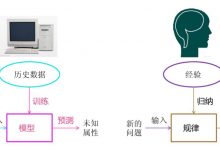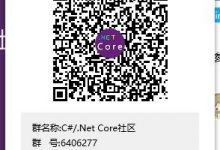参考博客:
https://blog.csdn.net/yunlinwang/article/details/51622143


该博客内容基本把Tsai求解该方程的过程已经阐述清楚了。只是没有写一个反对称矩阵,虽然简单,还是给出可以直接运行的程序吧!!!下面这个程序在配置好Opencv环境之后就可以直接运行。
- Rodrigues(Rgij, rgij);该函数是根据旋转矩阵求旋转向量,即罗德里格斯公式
- theta_gij = norm(rgij);该函数是求向量的2范数,也就是求向量的模
- skew(Pgij + Pcij);(自定义),求一个向量的反对称矩阵。
具体原理可以参考上面博客。以下只给出直接运行的代码。
需要注意的是:该方法求解该方程只适合A和B是位姿矩阵的形式,旋转矩阵加平移向量。旋转矩阵部分满足旋转矩阵的约束条件,向量单位化且两两正交
#include<iostream>#include <vector>#include <functional>#include <algorithm>#include <string>#include<map>#include <opencv2/opencv.hpp>using namespace cv;using namespace std;#define PRINT_INT(x, y) x#yMat skew( Mat res ){Mat result = (Mat_<double>(3, 3) << 0, -res.at<double>(2), res.at<double>(1),res.at<double>(2), 0, -res.at<double>(0),-res.at<double>(1), res.at<double>(0), 0);return result;}void Tsai_HandEye(Mat Hcg, vector<Mat> Hgij, vector<Mat> Hcij){CV_Assert(Hgij.size() == Hcij.size());int nStatus = Hgij.size();Mat Rgij(3, 3, CV_64FC1);Mat Rcij(3, 3, CV_64FC1);Mat rgij(3, 1, CV_64FC1);Mat rcij(3, 1, CV_64FC1);double theta_gij;double theta_cij;Mat rngij(3, 1, CV_64FC1);Mat rncij(3, 1, CV_64FC1);Mat Pgij(3, 1, CV_64FC1);Mat Pcij(3, 1, CV_64FC1);Mat tempA(3, 3, CV_64FC1);Mat tempb(3, 1, CV_64FC1);Mat A;Mat b;Mat pinA;Mat Pcg_prime(3, 1, CV_64FC1);Mat Pcg(3, 1, CV_64FC1);Mat PcgTrs(1, 3, CV_64FC1);Mat Rcg(3, 3, CV_64FC1);Mat eyeM = Mat::eye(3, 3, CV_64FC1);Mat Tgij(3, 1, CV_64FC1);Mat Tcij(3, 1, CV_64FC1);Mat tempAA(3, 3, CV_64FC1);Mat tempbb(3, 1, CV_64FC1);Mat AA;Mat bb;Mat pinAA;Mat Tcg(3, 1, CV_64FC1);for (int i = 0; i < nStatus; i++){Hgij[i](Rect(0, 0, 3, 3)).copyTo(Rgij);Hcij[i](Rect(0, 0, 3, 3)).copyTo(Rcij);Rodrigues(Rgij, rgij);Rodrigues(Rcij, rcij);theta_gij = norm(rgij);theta_cij = norm(rcij);rngij = rgij / theta_gij;rncij = rcij / theta_cij;Pgij = 2 * sin(theta_gij / 2) * rngij;Pcij = 2 * sin(theta_cij / 2) * rncij;tempA = skew(Pgij + Pcij);tempb = Pcij - Pgij;A.push_back(tempA);b.push_back(tempb);}//Compute rotationinvert(A, pinA, DECOMP_SVD);Pcg_prime = pinA * b;Pcg = 2 * Pcg_prime / sqrt(1 + norm(Pcg_prime) * norm(Pcg_prime));PcgTrs = Pcg.t();Rcg = (1 - norm(Pcg) * norm(Pcg) / 2) * eyeM + 0.5 * (Pcg * PcgTrs + sqrt(4 - norm(Pcg)*norm(Pcg))*skew(Pcg));//Computer Translationfor (int i = 0; i < nStatus; i++){Hgij[i](Rect(0, 0, 3, 3)).copyTo(Rgij);Hcij[i](Rect(0, 0, 3, 3)).copyTo(Rcij);Hgij[i](Rect(3, 0, 1, 3)).copyTo(Tgij);Hcij[i](Rect(3, 0, 1, 3)).copyTo(Tcij);tempAA = Rgij - eyeM;tempbb = Rcg * Tcij - Tgij;AA.push_back(tempAA);bb.push_back(tempbb);}invert(AA, pinAA, DECOMP_SVD);Tcg = pinAA * bb;cout << Rcg << endl;Rcg.copyTo(Hcg(Rect(0, 0, 3, 3)));Tcg.copyTo(Hcg(Rect(3, 0, 1, 3)));Hcg.at<double>(3, 0) = 0.0;Hcg.at<double>(3, 1) = 0.0;Hcg.at<double>(3, 2) = 0.0;Hcg.at<double>(3, 3) = 1.0;}void testMat(Mat res){res.at<double>(0, 2) = 199;}int main(int argc,char *agrv[]){vector<Mat> res1, res2;Mat a1 = (Mat_<double>(4, 4) <<0.9397, 0, 0.3420, 20.56,0.2418 , 0.7071, - 0.6645, 10.26,-0.2418, 0.7071, 0.6645, 5.23,0, 0, 0, 1);Mat b1 = (Mat_<double>(4, 4) <<0.6964, - 0.7071, 0.1228, 30.56,0.6964 , 0.7071 , 0.1228, 10.26,-0.1736, 0 , 0.9848, 5.20,0, 0, 0, 1);res1.push_back(a1);res2.push_back(b1);Mat result = (Mat_<double>(4, 4));Tsai_HandEye(result, res1, res2);cout << result << endl;}
 爱站程序员基地
爱站程序员基地
![[翻译] Backpressure explained — the resisted flow of data through software-爱站程序员基地](https://aiznh.com/wp-content/uploads/2021/05/3-220x150.jpeg)

